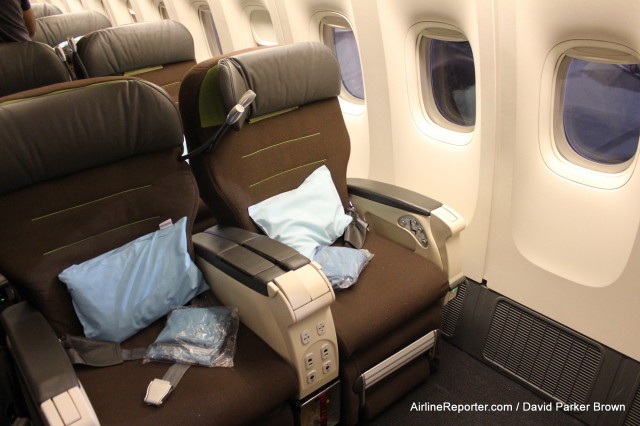
My Comfort Class seat on my Turkish Airlines Boeing 777-300ER out of LAX
Introduction
When I first saw I was booked in Comfort Class on Turkish Airlines, I wasn’t sure what to expect. I knew it was a premium economy product, but that could mean anything from a few inches of extra leg room to having an almost-business-class experience.
Being able to check out the product during my recent flights to and from Los Angeles to Istanbul, I was impressed overall by my whole experience. I enjoyed the comfortable seat, my amenities, the delicious food, and the access to the in-flight entertainment (IFE) system. However, I felt let down by the service that I received during certain points of my trip, which left me wanting a bit more.
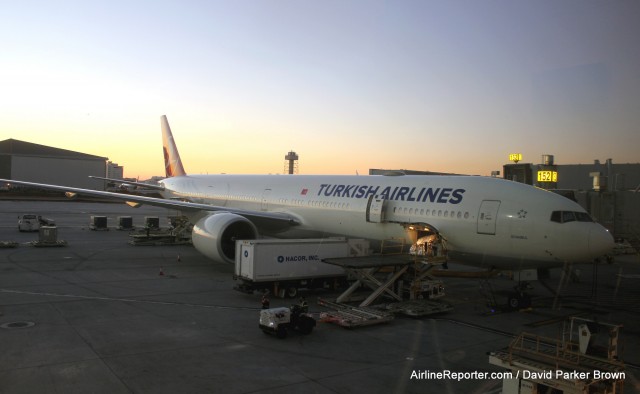
Turkish Airlines’ Boeing 777-300ER sitting at Istanbul
It was nothing that horrible, but just added up enough to make me disappointed overall about the experience. I think some of the things could easily be avoided or changed to make the passenger experience a bit better, and make people who feel like they shelled out some additional money for a premium product feel a bit more special.
One of the main reasons that I was flown to Istanbul was to work with Turkish to help them look into the future of their business – and part of that was related to customer service. I am grateful to work with an airline wanting to learn, and I hope that they are listening.
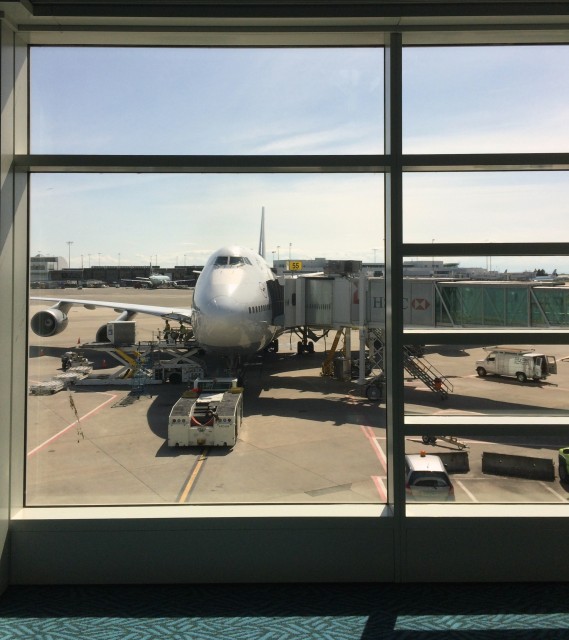
D-ABVS, my ride to Frankfurt, behind double-glazing – Photo: Bernie Leighton | AirlineReporter
As we all know, I am insane – I do stupid things, usually inspired by a picture I saw of something from years ago on the internet, fanning an intense jealous desire to have the same experience for myself. Why this is of any interest to the readership is because I consider getting there to be, at least, half the fun.
This time, I was off to UACC (IATA Code TSE, or as most people call it, Astana, Kazakhstan) to attend the third KADEX (also known as Kazakhstan’s defense expo). Originally, I was booked in Lufthansa business class for the Vancouver-Frankfurt portion of my itinerary, but after being informed by our Associate Editor that the aircraft I would be flying was not only rife with available first class seating, but that it was D-ABVS (an aircraft equipped with the new first), I felt it was my duty to exchange currencies of various forms and reasonable amounts for a soon-to-be vanishing experience.
Lufthansa, you see, is configuring these aircraft from three class (First, Business, Economy) into a different three class (Business, Premium Economy, and Economy). First class on a Lufthansa 747-400- will be gone for good soon- and I will sorely miss it.
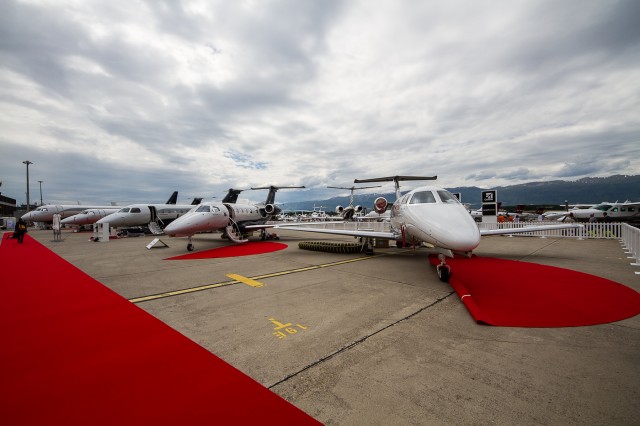
A total of 56 aircraft were p-resent at the EBACE 2014 static display Photo: Jacob Pfleger | AirlineReporter
In part 1 of my EBACE coverage I provided a brief background and some news from the event. This installment will cover the aircraft static display — and they were impressive.
There was a total of 56 aircraft on display, ranging from large airliner-type business aircraft such as the BBJ and Airbus A319CJ, right through to Very Light Jet (VLJ) models such as the Eclipse 500.
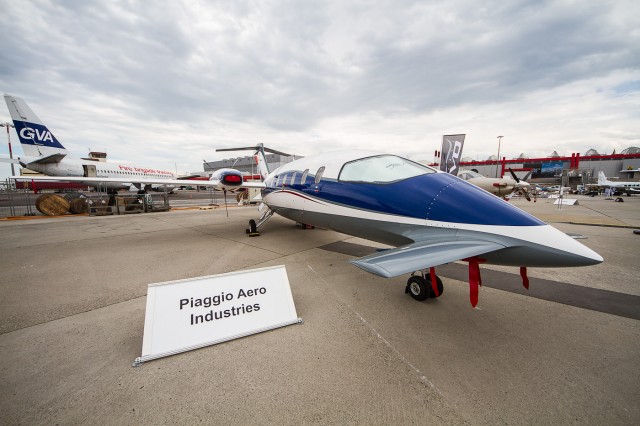
Both the Big and Small such as this Piaggio Avanti were on display Photo: Jacob Pfleger | AirlineReporter
Although there were the same amount of aircraft as last year at the static display, I did find last year’s show to have greater variety of aircraft than this year. Even so, this year’s display did not disappoint.
Most of the aircraft on display are generally offered for sale or charter, and of the 10 aircraft I viewed, at least three or four had already been sold at the show. This illustrates the importance of a static display; not just to please us AvGeeks, but also as a strategic selling point of the aircraft – think of it like a super luxury outdoor car lot.
From one flag on the tail to another, we get to see the transformation of an US Airways Airbus A319 from their livery to the new American Airlines livery. Now, are there still people out there who don’t like the new American livery?
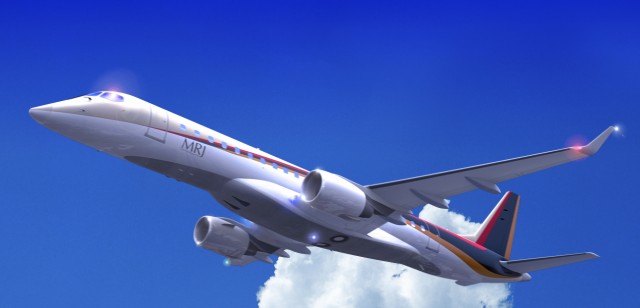
Composite image of the Mitsubishi MRJ – Image: Mitsubishi
This story was written by John Cameron for AirlineReporter.
The MRJ will be the first airliner designed and produced in Japan since the 1960s.
A bright new day will soon be dawning in the world of commercial aviation as a new breed of narrow-body jets take to the skies in the coming years. Fittingly, one aircraft heralding this ’œnew day’ will be arriving from the land of the rising sun ’“ Japan.
The aircraft, dubbed the MRJ (Mitsubishi Regional Jet), has been in development since 2008 when Mitsubishi Heavy Industries formed a subsidiary (the aptly-named Mitsubishi Aircraft Corporation) for the design and production work. Once complete, it will be the first airliner designed and produced in Japan since the venerable NAMC YS-11 ’“ a turboprop developed in the early 1960s to replace the aging DC-3s that were flying many of Japan’s domestic routes at the time.





